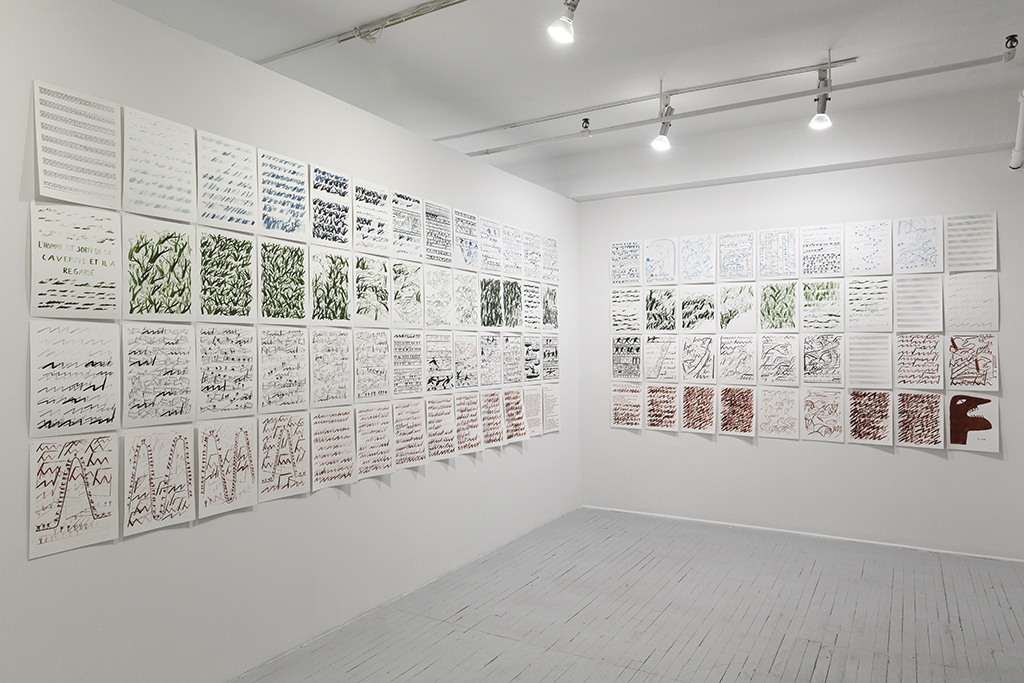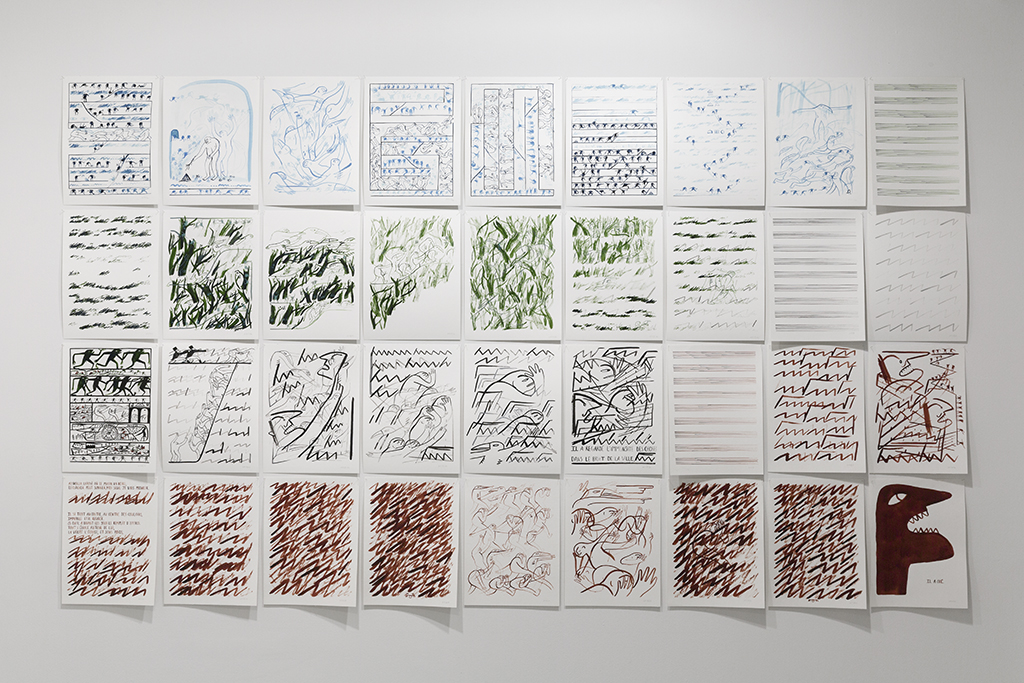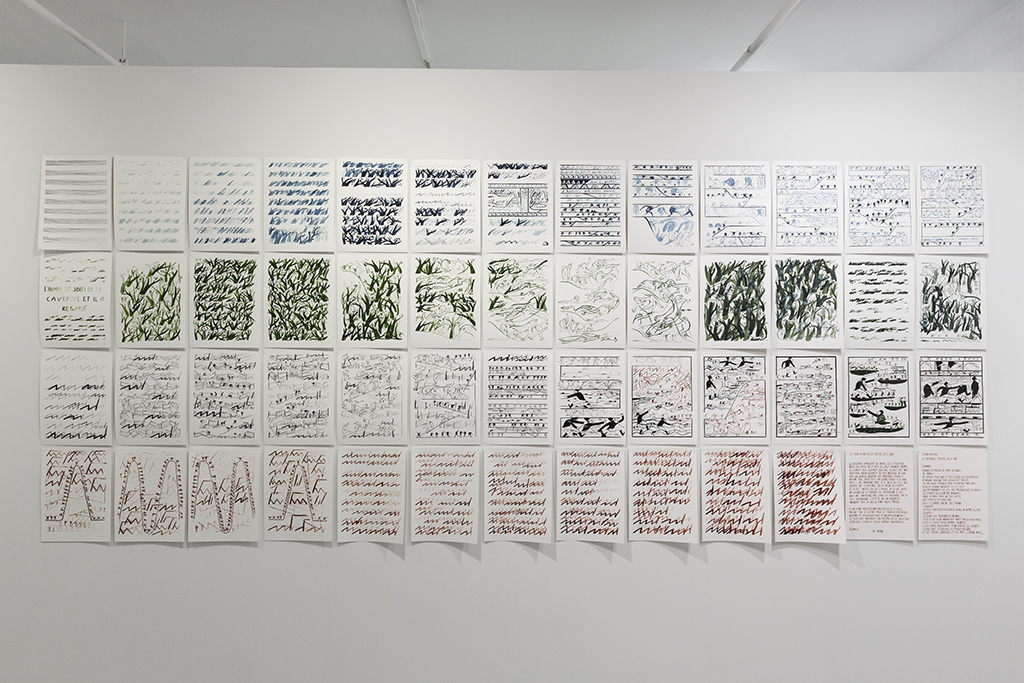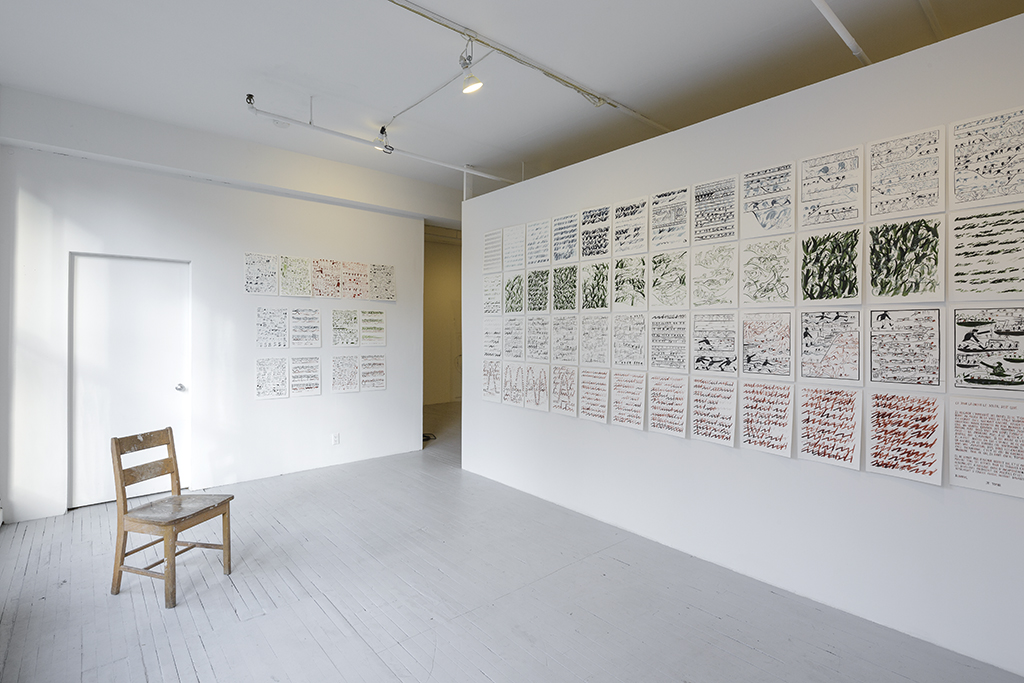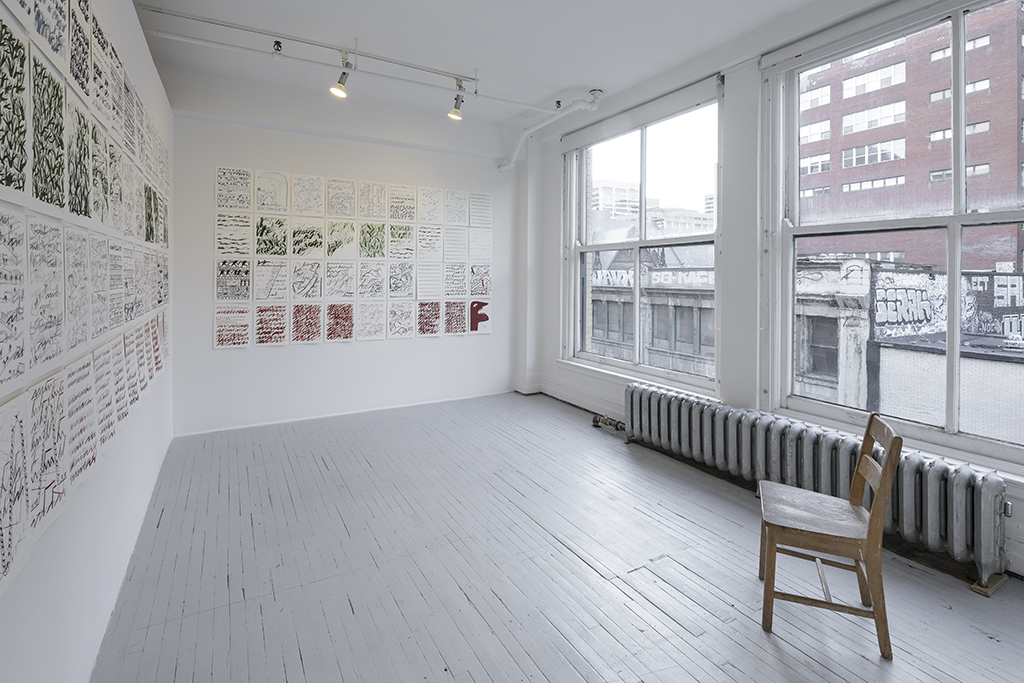Mügluck: Drawn Scores
Drawings
October 18 – November 16, 2013 (gallery 2)
Opening on Friday October 18, 5:30pm
Project Description
A series of rhythmically frenetic drawings, the Drawn Scores use codes from other mediums (music, writing, comics) as a way to question drawing and narration.
They find inspiration in Le CRI, a play written by the artist in 2012. They are a kind of staging without being illustrative; the drawing traces the narration, and can be seen as an exercise in writing.
Within this frame, the artist has added one constraint – the musical staff becomes the support and narrative tool. Based on the principle of the lexical fields of sound and design, the drawing becomes music theory, an alphabet unique to this piece, which has, moreover, been played by a musician in collaboration with the artist.
The lines of the staff can be seen as roads, corridors that form the landscape of the page, they serve as a support, and lead the narration. Lines of articulation or of segmentation, but also lines of escape, of movement, creating different rhythms and scales for each character. The play Le CRI, therefore, becomes a drawing, a drawing that is both mise-en-scène and music theory, in a disturbance of mediums that transgress their traditional roles.
By inventing various constraints and new writing systems, the artist invites each medium to spill into the other, and forces her brush to bring order to it, to negotiate the hierarchy between these mediums while creating an ideal scenario for the traced line to become unhinged, to rebel, to seek to flee.
Interpretive resources provided by the artist
Film:
1. Marguerite Duras, Les mains négatives, short film, 1979.
2. Georges Perec and Bernard Queysanne, Un homme qui dort, 1974.
3. Michel Piccoli, Themroc, 1973.
4. René Vienet, La dialectique peut-elle casser des briques?, 1973.
Essays:
1. Étienne de la Boétie, La servitude volontaire, 1549. Arléa, 2010.
2. Albert Camus, Le mythe de Sisyphe, 1942. Paris: Gallimard, Coll. Folio Essais, 2008.
3. Albert Camus, L’homme révolté, 1951. Paris: Gallimard, Coll. Folio Essais, 2011.
4. Le Comité Invisible, L’insurrection qui vient, Paris: La Fabrique, 2005.
5. Benjamin Peret, L’écriture automatique, texte destined for Diario da Noite, unpublished, .t. 1929. Complete Works, Tome 4, Jos. Corti, 1987, pp. 245-246.
6. Tiqqun, La théorie du Bloom. La Fabrique, 2004.
7. Raoul Vaneigem, Traité à l’usage des jeunes générations, 1967. Paris: Gallimard, Coll. Folio Actuel, 2006.
Music:
1. Philip Glass, Kronos Quartet, 1995.
2. Christoph Gluck, Orfeo ed Euridice, Opera in three acts, 1774.
3. Olivier Messiaen, Quatuor pour la fin du temps, for violin, clarinette, cello and piano, 1940 /1941 – 15 January 1941.
4. Le Merle noir, for flute and piano,1952.
5. Réveil des oiseaux, for piano solo and grand orchestra, 1953.
6. Oiseaux exotiques, for piano solo and small orchestra, October 1955 / January 1956 -10 March 1956.
7. Catalogue d’oiseaux, for piano, October 1956 /September 1958 – 15 April 1959.
8. Steve Reich, Variations, 2005. Three Movements, 1986. Variations for Winds, Strings and Keyboards, 1979.
9. Iannis Xenakis, Musiques formelles, Revue Musicale n°253-254, 1963, 232 p. Re-edition: Paris, Stock, 1981 261 p.
Illustration and graphic novels:
1. Jochen Gerner, Contre la bande dessinée, Paris: L’Association, 2008.
2. Thierry Groensteen, Système de la bande dessinée, Paris: Presses Universitaires de France, 1999.
3. Oubapo, Ouvroir de Bande-dessinée Potentielle.

